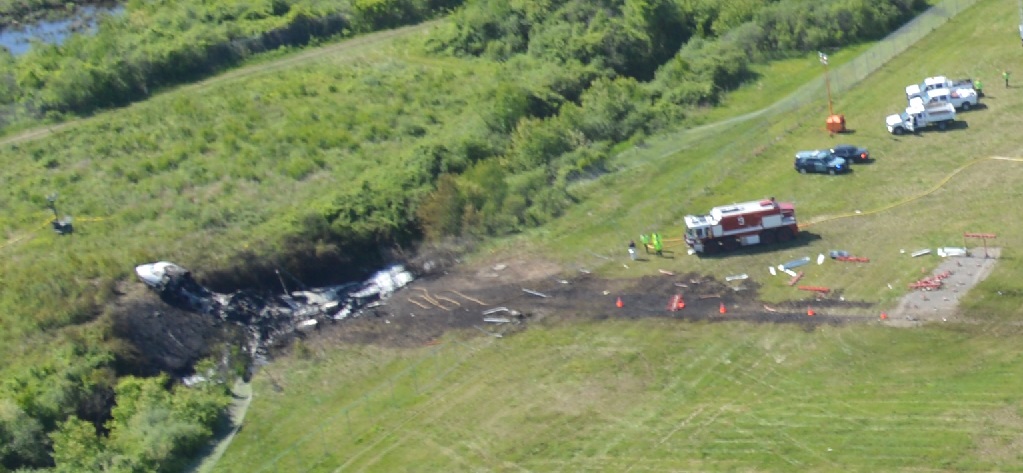Focus on Gust Locks After US G-IV accident
On 12 May 2014, 7 people died when Gulfstream G-IV business aircraft N121JM was destroyed at Hanscom Field, Bedford, Massachusetts, after a rejected takeoff and runway excursion.
Among the dead was Lewis Katz, co-owner of the US’s third-oldest daily newspaper. the Philadelphia Inquirer, who had been attending a charity event with his fellow travellers. Katz died just days after he and business partner Jerry Lenfest succeeded in agreeing a $88 million deal to be sole owners of the newspaper’s parent company.
NTSB report that:
A witness observed the airplane on the takeoff roll at a “high speed” with “little to no altitude gained.” The airplane subsequently rolled off the end of the runway, on to a runway safety area, and then on to grass. The airplane continued on the grass, where it struck approach lighting and a localizer antenna assembly, before coming to rest in a gully, on about runway heading, about 1,850 feet from the end of the runway. A postcrash fire consumed a majority of the airplane aft of the cockpit… Tire marks consistent with braking were observed to begin about 1,300 feet from the end of runway 11. The tire marks continued for about another 1,000 feet through the paved runway safety area. The CVR captured callouts of 80 knots, V1, and rotate. After the rotate callout, the CVR captured comments concerning aircraft control. FDR data indicated the airplane reached a maximum speed of 165 knots during the takeoff roll and did not lift off the runway. FDR data further indicated thrust reversers were deployed and wheel brake pressures increased as the airplane decelerated. The FDR data ended about 7 seconds after thrust reverser deployment, with the airplane at about 100 knots. The FDR data did not reveal evidence of any catastrophic engine failures and revealed thrust lever angles consistent with observed engine performance.
NTSB attention has focused on the aircraft’s gust locks:
The airplane was equipped with a mechanical gust lock system, which could be utilized to lock the ailerons and rudder in the neutral position, and the elevator in the down position to protect the control surfaces from wind gusts while parked. A mechanical interlock was incorporated in the gust lock handle mechanism to restrict the movement of the throttle levers to a minimal amount (6-percent) when the gust lock handle was engaged.
The FDR data revealed the elevator position was consistent the gust lock being engaged and there were no indications of a flight control check before take off. However the gust lock handle was found in the forward (OFF) position and the elevator gust lock latch was found not engaged.
While the investigation is ongoing, on 13 June 2014, Gulfstream issued a precautionary maintenance and operations letter to GIV operators stating that:
Flight crews are reminded to perform the following as set forth in the applicable AFM procedures for each model aircraft: ensure the gust lock is OFF prior to starting engines (not applicable for G650); check flight controls for freedom and correct movement prior to taxi/takeoff; [and] confirm the elevators are free during the takeoff roll.
The NTSB preliminary is here.
Further details can be found on Aviation Safety Network here.
UPDATE 21 August 2014: Gulfstream: Flight Controls Best Check for Lock Release
UPDATE 8 April 2015: The NTSB released data into the public docket. Cockpit transcript released from jet crash that killed Lewis Katz, 6 others NTSB reports reveal Hanscom crash’s tragic last moments
UPDATE 13 September 2015: We examine the human performance aspects after the NTSB hold a Board Meeting on this accident: Gulfstream G-IV Take Off Accident & Human Factors
UPDATE 10 May 2017: For more background on the investigation see: What Happens After a Crash?


Recent Comments